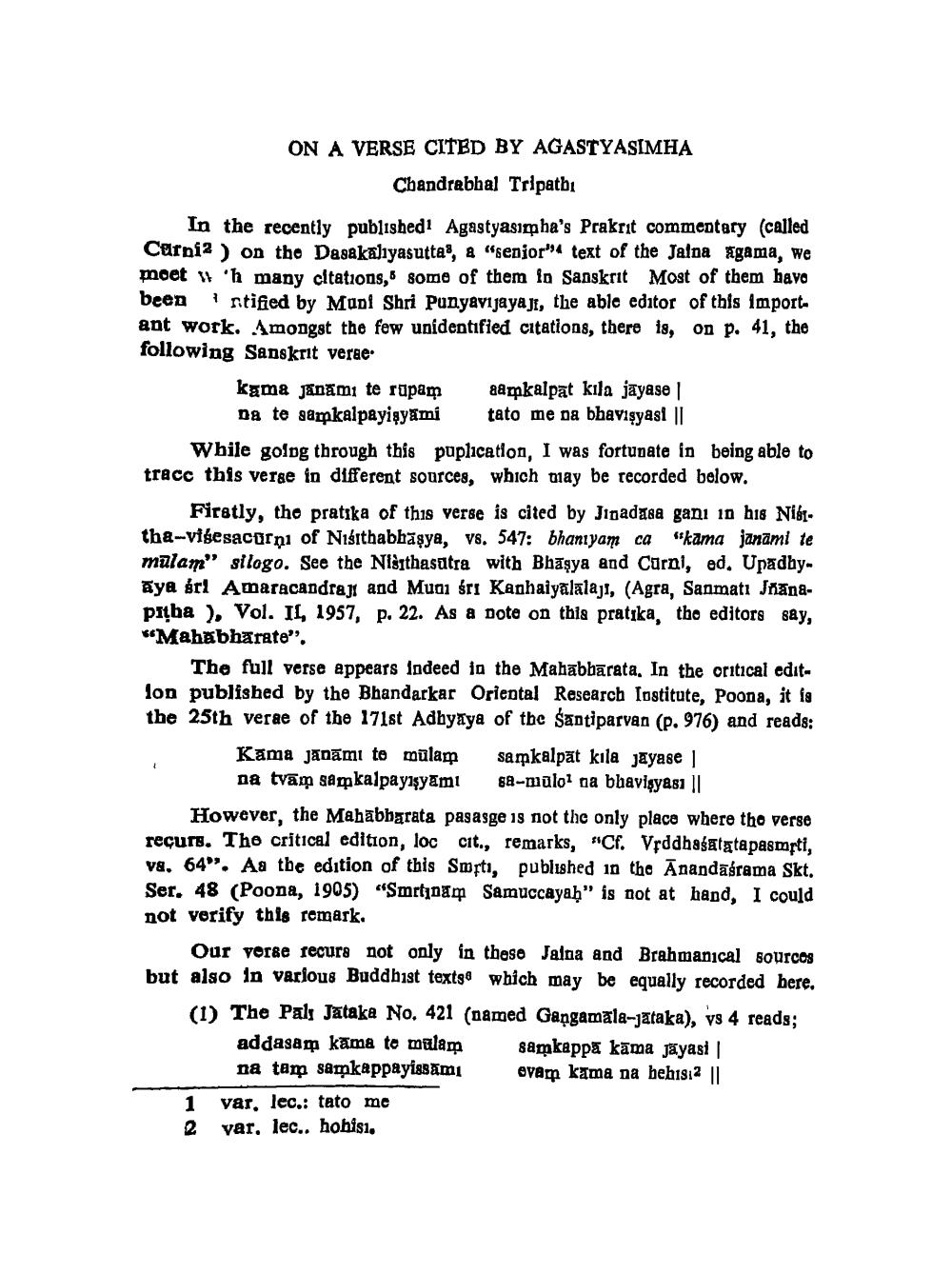________________
ON A VERSE CITED BY AGASTYASIMHA
Chandrabhal Tripathi
Jinadasa
kama unadby
In the recently publishedi Agastyasimha's Prakrit commentary (called Carnia ) on the Dasakaliyasuttas, & "senjor"* text of the Jalna agama, we moet 'h many citations, some of them in Sanskrit Most of them havo been intified by Mani Shri Punyavijayai, the able editor of this important work. Amongst the few unidentified citations, there 18, on p. 41, the following Sanskrit verae.
kama janamı te rüpam dampkalpat kila jayase
Da te aamkalpayişyámi tato me na bhavisyasi || While going through this paplication, I was fortunate in being able to tracc this verge in different sources, which diay be recorded below.
Firstly, the pratika of this verse is cited by Jipadasa gani in his Nibthe-visesacorņi of Niśıthabhāşya, vs. 547: bhaniyam ca "kama janāmi te malam" silogo. See the Nišithasūtra with Bhāşya and Carni, ed. UpadhyĀya sri Amaracandraji and Muai śrı Kanhaiyalalaji, (Agra, Sanmatı Jnanapitba ), Vol. II, 1957, p. 22. As a Dote on this pratika, the editors say, "Mahabharate".
The full verse appears indeed ja the Mahābbārata. In the oritical editlon published by the Bhandarkar Oriental Research Institute, Poona, it is the 25th verae of the 171st Adhyāya of the santiparvan (p. 976) and reads:
Kama janāmi to mulam samkalpāt kila jayase]
na tvām sapkalpayışyāmi sa-malol na bhavişyasi || However, the Mahabharata pasasge is not the only place where the verse recurs. The critical edition, loc cit., remarks, "Cf. Vrddhasatxta pasmrti, va. 64". As the edition of this Smrti, published in the Anandasrama Skt. Ser. 48 (Poona, 1905) "Smrtnam Samuccayah" is not at hand, I could not verify this remark.
Our vorge recurs not only in these Jalna and Brahmanical sourcos but also in various Buddhist texts which may be equally recorded here. (1) The Pal Jataka No. 421 (named Gangamala-jataka), vs 4 reads;
addasam kāma te malam samkappa kāma jāyasi |
na tam sampkappayiskāmı eva kama na behisia || 1 var, lec.: tato me 2 var, lec.. hohisi,




